The defeat of a Scottish army at the 1650 Battle of Dunbar was just the beginning of an epic ordeal for the survivors.

On September 3, 1650, between Doon Hill and the London Road in Dunbar, Scotland, the English Parliamentary army led by Oliver Cromwell battled the Scottish Covenanting army. By this time, the series of conflicts known as the English Civil Wars had raged, off and on, for eight years. At the outset, Cromwell and the Scots had been on the same side, opposed to the royalists who backed King Charles I. The king had been beheaded the previous year, and now the Scots were supporting the royal claim of his son, Charles II.
The Scots are thought to have had as much as a two-to-one advantage in men, and held a superior position on the hill. However, many of the Scots were novices who had been recruited over the summer to replace more experienced soldiers purged from the army for their dissenting political views. When the Scots set out to attack at first light, Cromwell’s forces pounced and made quick work of them. The Battle of Dunbar was over in an hour, with the Scots suffering the overwhelming majority of casualties.
“I imagine it was quite chaotic. Cromwell’s men were trained professionals, and the Scots weren’t in good condition when they went into that battle,” says Chris Gerrard, an archaeologist at the University of Durham. “They had been at war for many years, and the clans were tired of giving up their best to the army. It was just men against boys.”
This story is from the May/June 2017 edition of Archaeology.
Start your 7-day Magzter GOLD free trial to access thousands of curated premium stories, and 8,500+ magazines and newspapers.
Already a subscriber ? Sign In
This story is from the May/June 2017 edition of Archaeology.
Start your 7-day Magzter GOLD free trial to access thousands of curated premium stories, and 8,500+ magazines and newspapers.
Already a subscriber? Sign In
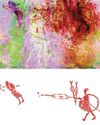
A Very Close Encounter
New research has shown that human figures painted in red on a rock art panel in central Montana depict individuals engaged in a life-or-death encounter during an especially fraught historical moment.
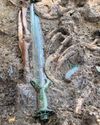
A Sword for the Ages
A zigzag pattern, now tinged with the green-blue patina of oxidized metal, adorns the octagonal hilt of a rare sword dating to the Middle Bronze Age in Germany (1600-1200 B.C.) that was recently excavated in the Bavarian town of Nördlingen.
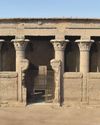
Ancient Egyptian Astrology
For centuries, layers of soot have coated the ceilings and columns in the entrance hall of Egypt's Temple of Esna. Now, an Egyptian-German team of researchers, led by Hisham El-Leithy of the Egyptian Ministry of Tourism and Antiquities and Christian Leitz of the University of Tübingen, is restoring the temple's vibrant painted reliefs to their original brilliance.
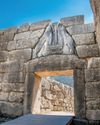
BRONZE AGE POWER PLAYERS
How Hittite kings forged diplomatic ties with a shadowy Greek city-state
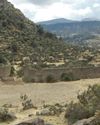
RITES OF REBELLION
Archaeologists unearth evidence of a 500-year-old resistance movement high in the Andes

Secrets of Egypt's Golden Boy
CT scans offer researchers a virtual look deep inside a mummy's coffin

When Lions Were King
Across the ancient world, people adopted the big cats as sacred symbols of power and protection

UKRAINE'S LOST CAPITAL
In 1708, Peter the Great destroyed Baturyn, a bastion of Cossack independence and culture

LAPAKAHI VILLAGE, HAWAII
Standing beside a cove on the northwest coast of the island of Hawaii, the fishing village of Lapakahi, which is surrounded by black lava stone walls, was once home to generations of fishers and farmers known throughout the archipelago for their mastery of la'au lapa'au, or the practice of traditional Hawaiian medicine. \"

A MORE COMFORTABLE RIDE
Although the date is much debated, most scholars believe people 5,000 years ago. For thousands of years after that, they did so without saddles. \"In comparison with horse riding, the development of saddles began relatively late, when riders began to care more about comfort and safety in addition to the horse's health,\" says University of Zurich archaeologist Patrick Wertmann.